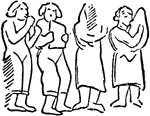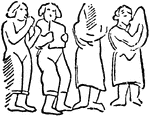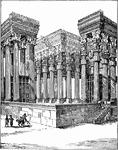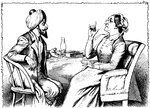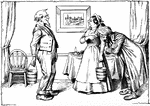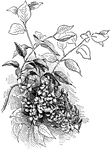
Oannes
"The name of a Babylonian god, who, in the first year of the foundation of Babylon, is said to have…

Roman Eagle
"Eagle, as a military standard, was adopted by the Romans, and even by nations preceding them in history.…

Brass Vase
"Brass Vase, pierced and gilt; 17th century Persian work." —The Encyclopedia Britannica, 1903

Persian Soldiers
Soldiers of the Persian bodyguard. From frieze in the audience hall of Darius at Susa.

Ancient Persian Throne
The Ancient Persian Throne was decorated to represent a king sitting on his throne borne-up by slaves.

A Parsi of Bombay
A Parsi, sometimes spelled Parsee, is a member of a Zoroastrian community based primarily in the Indian…
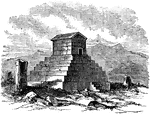
Tomb of Cryus
The Tomb of Cyrus is the burial place of the ancient Cyrus the Great of Persia. Cyrus the Great was…

Tsymbaly
The tsymbaly or santir is a dulcimer or chordophone used in the Ukraine and the Middle East.

Chess Board
Chess is a recreational and competitive game played between two players. Sometimes called Western chess…
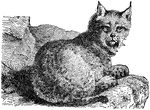
Lynx
A lynx is any of four medium-sized wild cats. All are members of the genus Lynx, but there is considerable…

Column from Persepolis
Persepolitan architecture is noted for its use of wooden columns. Architects resorted to stone only…
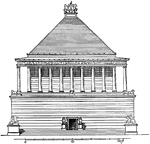
Mausoleum at Halicarnassus
The Mausoleum at Halicarnassus was a tomb built between 353 and 350 BC at Halicarnassus (present Bodrum,…

Papal Tiara
The Papal Tiara, also known as the Triple Tiara, or in Latin as the 'Triregnum', and in Italian as the…
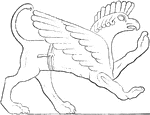
Sculptured Griffin from the Sculptures in the Ruins of Nineveh
A representation of an Assyrian griffin that adorned their buildings prior to the Persian conquest.

Ruins of Persepolis
Persepolis was the ceremonial capital of the Persian Empire during the Achaemenid dynasty. Persepolis…
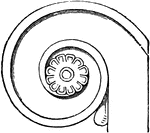
Volute of the Persian Column
Other capitals are more compact, where from the lower part, which is in the shape of a globular vessel,…
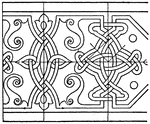
Persian Interlacement Band
The Persian interlacement band was found on a metal vessel. It's an oriental style that exhibits greater…

Ancient Persian Capital
The Ancient Persian capital is a design of the fore-parts of bulls. It is an Old Persian style that…

Persian Capital
An illustration of a Persian capital. In several traditions of architecture including Classical architecture,…
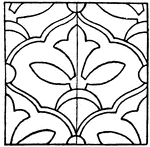
Persian Enamel Pattern
The Persian enamel pattern is a design that uses metal fillets that are filled with pulverized colored…

Old Persian Jar
This old Persian jar is made with a repousse copper technique. It is a metalworking technique shaped…
Persian Bottle
This Persian bottle is made out of clay. It has an elongated neck with a rounded bottom and ring foot.

Feloher from Nineveh
"One of an order of beings, the life-principles or geniuses or tutelary spirits of living beings, believed…

Captive Insurgents Brought Before Darius
An illustration of a hieroglyphic depicting captive insurgents being brought before Darius.
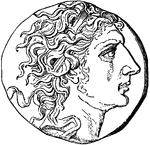
Mithradates VI Coin
An illustration of Mithradates VI on the face of a coin. Mithradates VI was king of Pontus in northern…

Flag of Bahrain, 2009
Color flag of Bahrain. Red, the traditional color for flags of Persian Gulf states, with a white serrated…

Flag of Bahrain, 2009
Black and white outline flag of Bahrain. Red, the traditional color for flags of Persian Gulf states,…

Flag of Morocco, 2009
Color flag of Morocco. Red with a green pentacle (five-pointed, linear star) known as Sulayman's (Solomon's)…

Flag of Morocco, 2009
Black and white outline flag of Morocco. Red with a green pentacle (five-pointed, linear star) known…
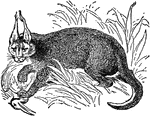
Caracal with Prey
"Caracal, a species of lynx; a native of Northern Africa and Southwestern Asia. It is about the size…
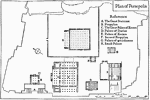
Plan of Persepolis, 513 BC
A plan of Persepolis, near Shiraz, Iran, from the time of Darius I (549–486 BC) until the downfall…
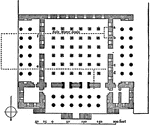
Plan of the Hall of Xerxes, 485–465 BC
This is a plan of the Hall of Xerxes in Persepolis, near Shiraz, Iran. This is the plan of he palace…
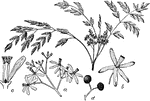
Persian Lilac
Commonly called Persian Lilac, White Cedar, Chinaberry or Bead Tree, Lunumidella, Ceylon Cedar, Melia…
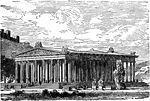
Temple of Diana at Ephesus
"The temple of Diana was the chief glory of the city. The style was Grecian. The length of the ground-plan…

Ancient Susa
An image depicting an ancient city of the Persian, Parthian, and Elamite empires of Iran.

Battle of Cunaxa
Battle fought between two brothers, Cyrus the Younger and Arsaces. Cyrus managed to collect eleven thousand…
!["Here [Darius] was assassinated by Bessus, the satrap of Bactria. He was discovered by Alexander in a dying condition by the roadside. He asked for a cup of water, thanked the giver, and died. And with him died the Empire of the Persians."—Ridpath, 1885](https://etc.usf.edu/clipart/78900/78909/78909_dariusbody_mth.gif)
Alexander Discovers the Body of Darius
"Here [Darius] was assassinated by Bessus, the satrap of Bactria. He was discovered by Alexander in…
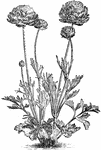
Persian Buttercup
Also known as Ranunculus asiaticus. A herbaceous perennial plant with red or pink flowers. The stems…

The Mound at Marathon
"Near the southern extremity of the plain of Marathon rises a conical mound, 30 feet high. it covers…



